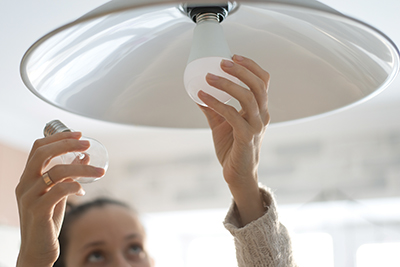Buying that first investment property can be a strange experience. Most people approach their own home with a “whatever it takes” attitude. Leaking pipe? Pay whatever plumber can get there fastest—no matter the cost. With a rental property, you suddenly have to think about things like your return on investment and overhead. If you spend too much maintaining the property, you’ll end up losing money.
In this article, we’ll review a few ways you can better maintain your rental property, avoid major issues, and put a cap on your total maintenance costs.
Know your property
One of the reasons why property owners hate maintenance and repair costs so much is that they often take them by surprise. It’s hard to budget for improvements or set rent when you’re nervously looking over your shoulder, waiting for the proverbial other shoe to drop. To move past this, you need to get to know your property—inside-and-out.
If the property has a past history of termite damage, for instance, that’s something you’ll want to have checked out shortly after closing. Don’t just assume the prior owners took care of the issue. Termite damage, in particular, can compromise your property’s structure and lower its value. Even if you don’t currently have an infestation, you’ll need to remain vigilant in the years to come: termites are eager re-infesters that can, and probably will, return to your property.
This same principle applies to other parts of your home, too. If the home inspection report you received prior to closing revealed long-term issues with the roof, or informed you that the water heater is on its last legs, you have the benefit of foresight. Whether you’re planning on flipping the property or renting it out for many years to come, you can put together a solid to-do list from just your homebuyer’s inspection alone.
Invest in preventative maintenance
True to its name, preventative maintenance keeps the property in good condition and can defuse a lot of potentially expensive problems. It can also help you save money throughout the year.
Take AC and furnace tune-ups, for instance. Depending on where you live, a seasonal tune-up typically costs between $75 and $150. If that tune-up, however, helps prevent a single major breakdown or repair, it has easily paid for itself many times over. The same thing is true for sewer line camera inspections, pest control inspections, and other cautionary maintenance.
To keep your maintenance costs down, divide your property’s maintenance needs into two categories: projects you can complete yourself versus projects you’ll need an expert to help you with. Some of the maintenance projects in the former group include repainting interior walls, deep-cleaning carpets between renters, or repairing a fence or gate. For obvious reasons, you’ll want to bring in a pro to help with anything related to HVAC, plumbing, roofing, pest control, or electrical issues.
Deal with problems decisively
No matter how much time, money, and effort you put into preventative maintenance, you’ll inevitably have to deal with one or two major issues every few years. This includes heating and cooling breakdowns, sewer line issues, roofing issues, pest control problems, and so much more. While you can’t predict exactly what you’ll have to face, you can control your response. You need to be decisive.
When your renter calls you about a problem, make it your top priority. It may not be your home, but it is your property, after all. If the sewer line backs up, or the roof leaks, it will hurt you the most. Don’t hesitate to call in a professional. In fact, if you’re able, vet out several service experts in your area and have their numbers easily accessible. Make sure they offer 24/7 service—property problems don’t keep a 9-5 schedule, and many can’t wait until morning.
By being decisive in a crisis, you’ll help limit the damage to your property, saving you money and making future maintenance easier and less expensive.























0 Comments